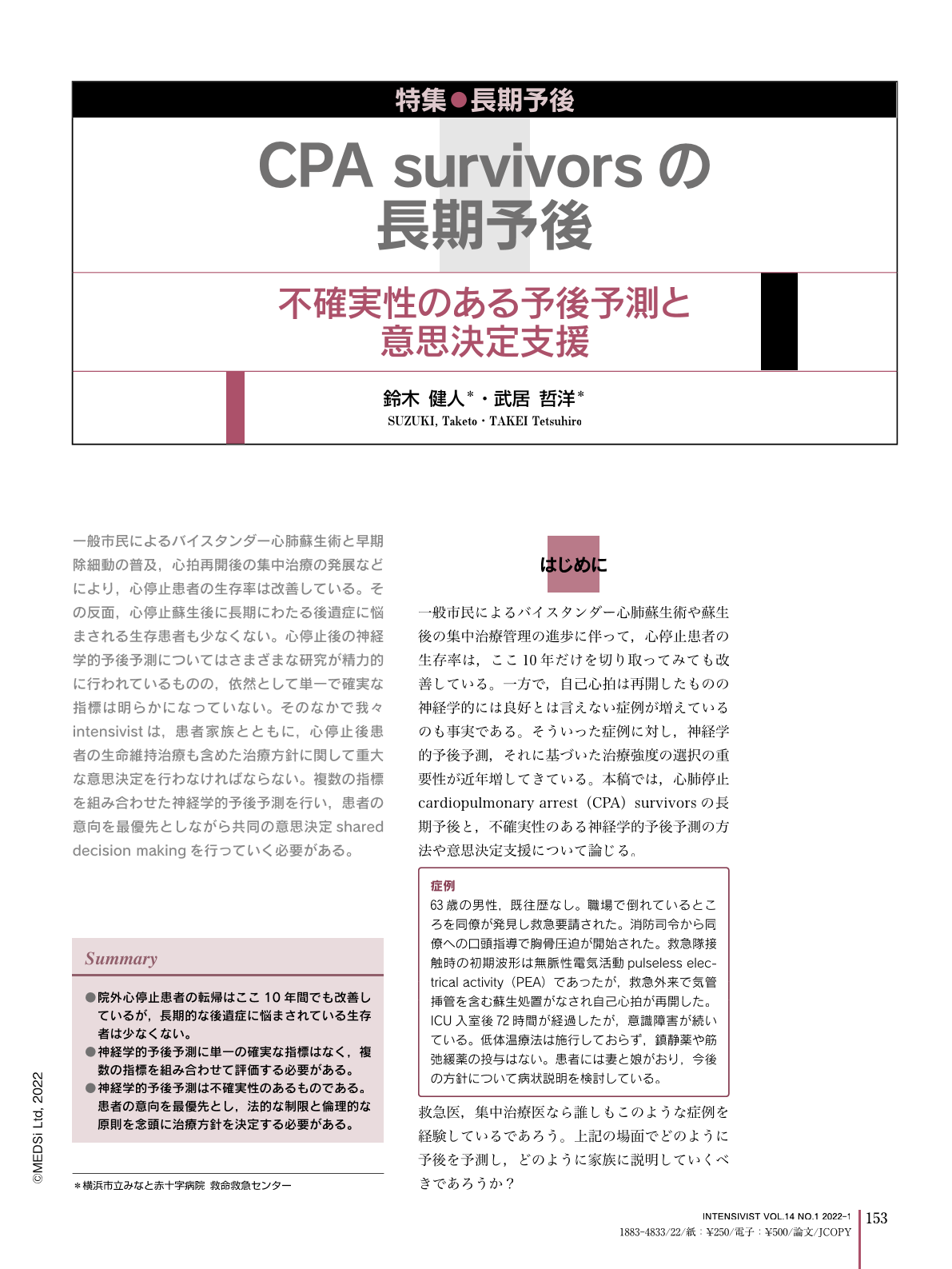Japanese
English
- 有料閲覧
- Abstract 文献概要
- 1ページ目 Look Inside
- 参考文献 Reference
一般市民によるバイスタンダー心肺蘇生術と早期除細動の普及,心拍再開後の集中治療の発展などにより,心停止患者の生存率は改善している。その反面,心停止蘇生後に長期にわたる後遺症に悩まされる生存患者も少なくない。心停止後の神経学的予後予測についてはさまざまな研究が精力的に行われているものの,依然として単一で確実な指標は明らかになっていない。そのなかで我々intensivistは,患者家族とともに,心停止後患者の生命維持治療も含めた治療方針に関して重大な意思決定を行わなければならない。複数の指標を組み合わせた神経学的予後予測を行い,患者の意向を最優先としながら共同の意思決定shared decision makingを行っていく必要がある。
Due to strengthening the chain of survival including bystander cardiopulmonary resuscitation, public-access defibrillation and the development of post-resuscitation care, the survival rate of patients who suffer cardiac arrest has been improving. However, a not negligible number of survivors suffer long-term sequelae such as hypoxic-ischemic brain injury, or cognitive, emotional and physical problems. Although various studies have been conducted, no single definitive test to predict neurological outcomes after cardiac arrest has been identified. Nevertheless, intensivists, together with the patients' family, have to make critical decisions regarding treatment strategies for patients after cardiac arrest including life-sustaining treatment. Therefore, we need to achieve shared decision-making based on the prediction of neurological outcomes using a combination of multiple indicators and patients' preferences.

Copyright © 2022, MEDICAL SCIENCES INTERNATIONAL, LTD. All rights reserved.


